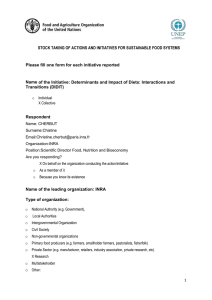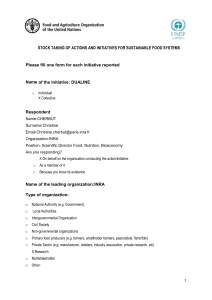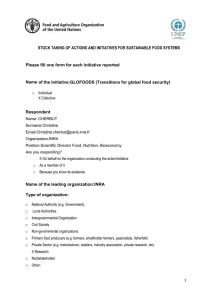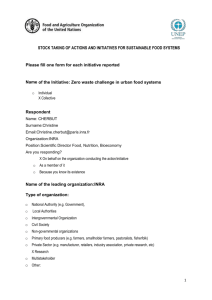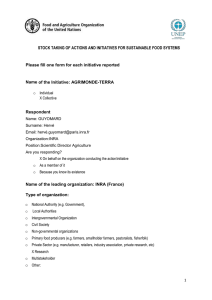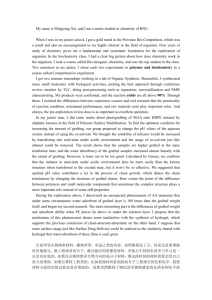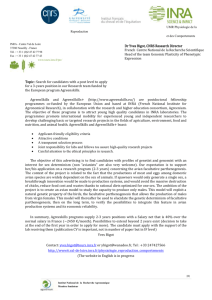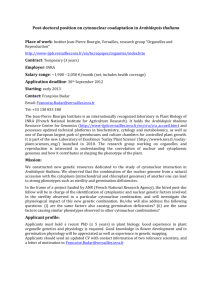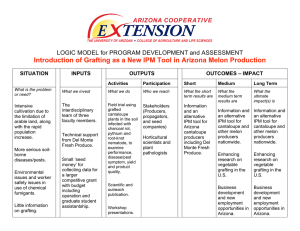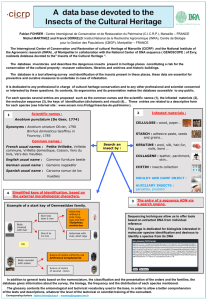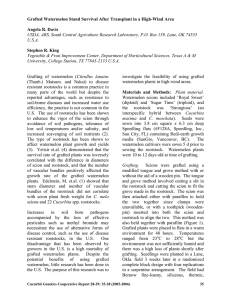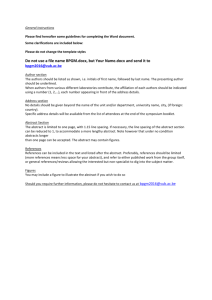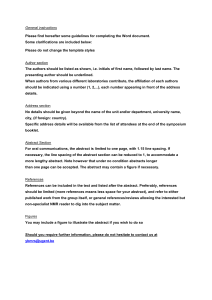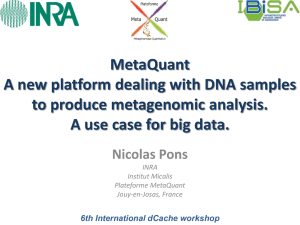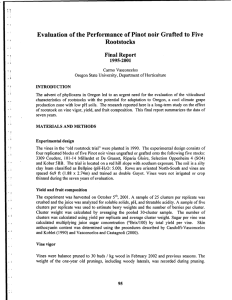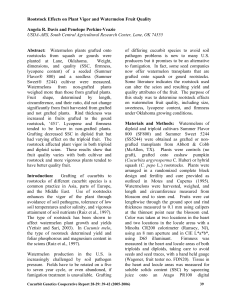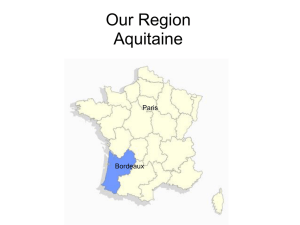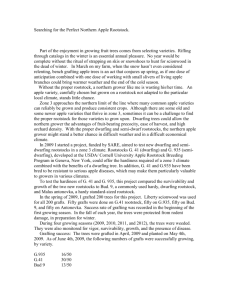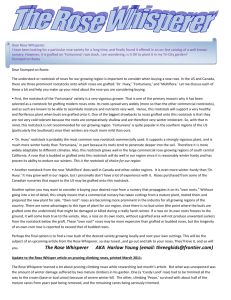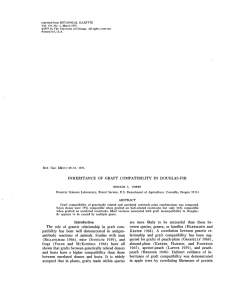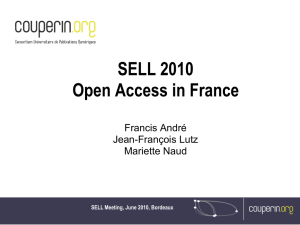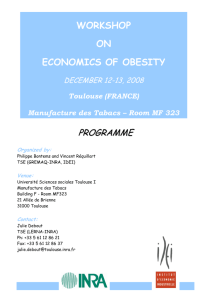Visit to INRA 2012 - East Malling Research
advertisement
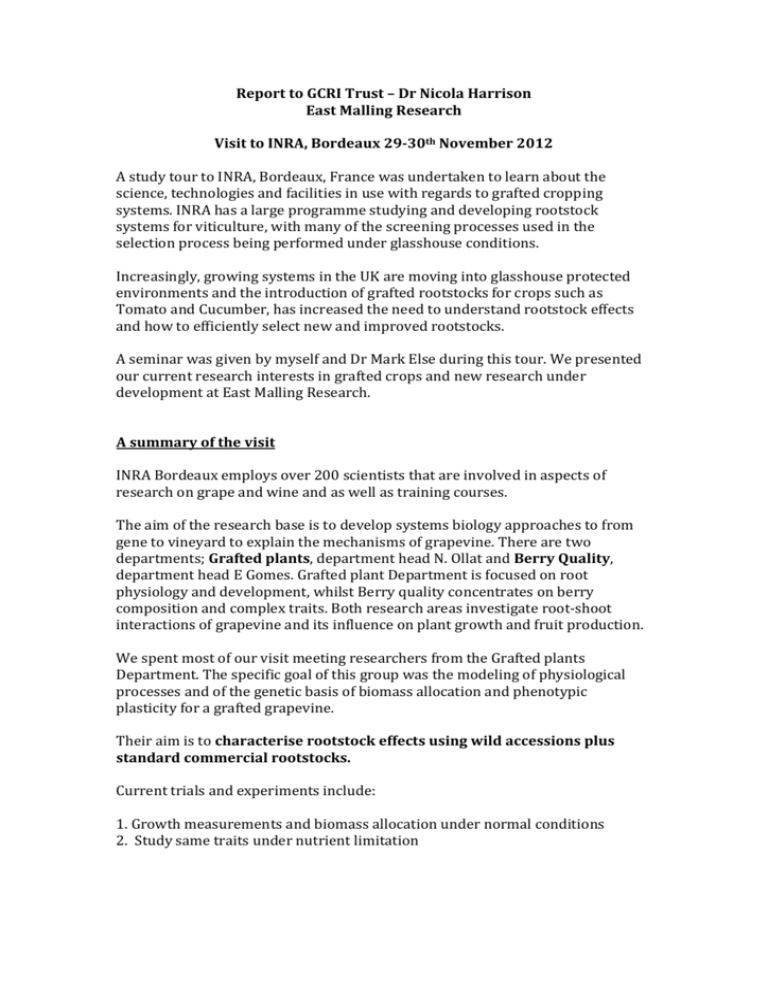
Report to GCRI Trust – Dr Nicola Harrison East Malling Research Visit to INRA, Bordeaux 29-30th November 2012 A study tour to INRA, Bordeaux, France was undertaken to learn about the science, technologies and facilities in use with regards to grafted cropping systems. INRA has a large programme studying and developing rootstock systems for viticulture, with many of the screening processes used in the selection process being performed under glasshouse conditions. Increasingly, growing systems in the UK are moving into glasshouse protected environments and the introduction of grafted rootstocks for crops such as Tomato and Cucumber, has increased the need to understand rootstock effects and how to efficiently select new and improved rootstocks. A seminar was given by myself and Dr Mark Else during this tour. We presented our current research interests in grafted crops and new research under development at East Malling Research. A summary of the visit INRA Bordeaux employs over 200 scientists that are involved in aspects of research on grape and wine and as well as training courses. The aim of the research base is to develop systems biology approaches to from gene to vineyard to explain the mechanisms of grapevine. There are two departments; Grafted plants, department head N. Ollat and Berry Quality, department head E Gomes. Grafted plant Department is focused on root physiology and development, whilst Berry quality concentrates on berry composition and complex traits. Both research areas investigate root-shoot interactions of grapevine and its influence on plant growth and fruit production. We spent most of our visit meeting researchers from the Grafted plants Department. The specific goal of this group was the modeling of physiological processes and of the genetic basis of biomass allocation and phenotypic plasticity for a grafted grapevine. Their aim is to characterise rootstock effects using wild accessions plus standard commercial rootstocks. Current trials and experiments include: 1. Growth measurements and biomass allocation under normal conditions 2. Study same traits under nutrient limitation Photographs taken during the visit to INRA, Bordeaux. Above: An example of a split-root pot experiment to assess growth characteristics under different stresses such as water and nutrient limitation. Left: The plant weighing centre at INRA, Bordeaux, allows measurements of transpiration rate over time. The scales are all connected to data logging software and data are automatically collected and monitored. Other areas of research include plant modeling and genetic analysis, the aims include: - to breed new rootstocks resistant to phylloxera/root nematodes - previous focus was on lime soils but now focus is on water - use rootstocks to reduce vigour and control yield and vegetative growth - climate change – understand adaptation to abiotic factors Outcomes A number of potential areas of research centred around root-shoot interactions and plant signaling were established for further collaborative discussions along with a reciprocal invitation for INRA scientists to visit EMR in the near future.
